 The UK economy is suffering from a lack of aggregate demand. Low spending in real terms is preventing the economy from growing. A simple solution would seem to be to stimulate aggregate demand through fiscal policy, backed up by even looser monetary policy. But this is easier said than done and could result in undesirable consequences in the medium term.
The UK economy is suffering from a lack of aggregate demand. Low spending in real terms is preventing the economy from growing. A simple solution would seem to be to stimulate aggregate demand through fiscal policy, backed up by even looser monetary policy. But this is easier said than done and could result in undesirable consequences in the medium term.
If increased borrowing were to be used to fund increased government expenditure and/or cuts in taxes, would any resulting growth be sufficient in the medium term to reduce the public-sector deficit below the initial level through automatic fiscal stabilisers? And would the growth be sustainable? The answer to this second question depends on what happens to the supply side of the economy. Would there be an increase in aggregate supply to match the increase in aggregate demand?
 This second question has led many economists to argue that we need to see a rebalancing of the economy. What is needed is an increase in investment and exports, rather than an increase in just consumer expenditure funded by private borrowing and government current expenditure funded by public borrowing.
This second question has led many economists to argue that we need to see a rebalancing of the economy. What is needed is an increase in investment and exports, rather than an increase in just consumer expenditure funded by private borrowing and government current expenditure funded by public borrowing.
But how will exports and investment be stimulated? As far as exports are concerned, it was hoped that the depreciation of the pound since 2008 would give UK exporters a competitive advantage. Also domestic producers would gain a competitive advantage in the UK from imports becoming more expensive. But the current account deficit has actually deteriorated. According to the EU’s AMECO database, in 2008 the current account deficit was 1% of GDP; in 2012 it was 3.7%. It would seem that UK producers are not taking sufficient advantage of the pound’s depreciation, whether for exports or import substitutes.
 As far as investment is concerned, there are two major problems. The first is the ability to invest. This depends on financing and things such as available land and planning regulations. The second is the confidence to invest. With not little or no growth in consumer demand, there is little opportunity for the accelerator to work. And with forecasts of sluggish growth and austerity measures continuing for some years, there is little confidence in a resurgence in consumer demand in the future. (Click here for a PowerPoint of the above chart. Note that the 2013 plots are based on AMECO forecasts.)
As far as investment is concerned, there are two major problems. The first is the ability to invest. This depends on financing and things such as available land and planning regulations. The second is the confidence to invest. With not little or no growth in consumer demand, there is little opportunity for the accelerator to work. And with forecasts of sluggish growth and austerity measures continuing for some years, there is little confidence in a resurgence in consumer demand in the future. (Click here for a PowerPoint of the above chart. Note that the 2013 plots are based on AMECO forecasts.)
So hope of a rebalancing is faint at the current time. Hence the arguments for an increase in government capital expenditure that we looked at in the last blog post (The political dynamite of calm economic reflection). The problem and the options for government are considered in the following articles.
Articles
Budget 2013: Chancellor’s rebalancing act BBC News, Stephanie Flanders (11/3/13)
Why George Osborne is failing to rebalance the economy The Guardian, Larry Elliott (17/3/13)
Economy fails to ‘rebalance’ Financial Times, Sarah O’Connor (27/2/13)
Analysis – Long haul ahead for Britain’s struggling economy Reuters, William Schomberg (3/3/13)
Can banks be forced to lend more? BBC News, Robert Peston (12/3/13)
Budget 2013: What the commentators are saying BBC News (13/3/13)
Data
UK Trade, January 2013 (ONS) (12/3/13)
Business investment, Q4 2012 ONS (27/2/13)
Questions
- Draw a diagram to illustrate the effects of a successful policy to increase both aggregate demand and aggregate supply. What will determine the effect on the output gap?
- For what reasons has the UK’s current account deteriorated over the past few years while those of the USA and the eurozone have not?
- Using ONS data, find out what has happened to the UK’s balance of trade in (a) goods and (b) services over the past few years and explain your findings.
- Why are firms reluctant to invest at the moment? What policy measures could the government adopt to increase investment?
- With interest rates so low, why don’t consumers borrow and spend more, thereby aiding the recovery?
 In a carefully argued article in the New Statesman, the UK Business Secretary, Vince Cable, considers the slow recovery in the economy and whether additional measures should be adopted. He sums up the current state of the economy as follows:
In a carefully argued article in the New Statesman, the UK Business Secretary, Vince Cable, considers the slow recovery in the economy and whether additional measures should be adopted. He sums up the current state of the economy as follows:
The British economy is still operating at levels around or below those before the 2008 financial crisis and roughly 15 per cent below an albeit unsustainable pre-crisis trend. There was next to no growth during 2012 and the prospect for 2013 is of very modest recovery.
Unsurprisingly there is vigorous debate as to what has gone wrong. And also what has gone right; unemployment has fallen as a result of a million (net) new jobs in the private sector and there is vigorous growth of new enterprises. Optimistic official growth forecasts and prophets of mass unemployment have both been confounded.
He argues that supply-side policies involving “a major and sustained commitment to skills, innovation and infrastructure investment” are essential if more rapid long-term growth is to be achieved. This is relatively uncontroversial.
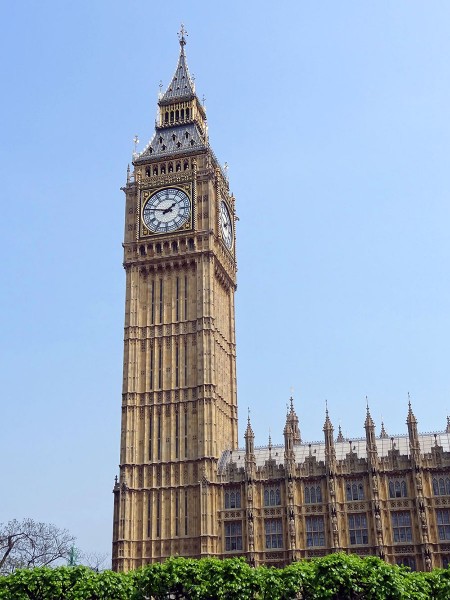 But he also considers the claim that austerity has kept the economy from recovering and whether policies to tackle the negative output gap should be adopted, even if this means a short-term increase in government borrowing.
But he also considers the claim that austerity has kept the economy from recovering and whether policies to tackle the negative output gap should be adopted, even if this means a short-term increase in government borrowing.
But crude Keynesian policies of expanding aggregate demand are both difficult to implement and may not take into account the particular circumstance of the current extended recession – or depression – in the UK and in many eurozone countries. World aggregate demand, however, is not deficient. In fact it is expanding quite rapidly, and with the sterling exchange rate index some 20% lower than before the financial crisis, this should give plenty of opportunity for UK exporters.
Yet expanding UK aggregate demand is proving difficult to achieve. Consumers, worried about falling real wages and large debts accumulated in the years of expansion, are reluctant to increase consumption and take on more debts, despite low interest rates. In the light of dampened consumer demand, firms are reluctant to invest. This makes monetary policy particularly ineffective, especially when banks have become more risk averse and wish to hold higher reserves, and indeed are under pressure to do so.
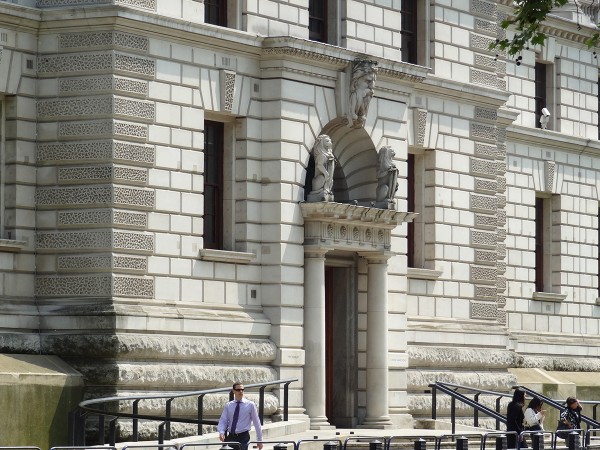 So what can be done? He argues that there is “some scope for more demand to boost output, particularly if the stimulus is targeted on supply bottlenecks such as infrastructure and skills.” In other words, he advocates policies that will simultaneously increase both aggregate demand and aggregate supply. Monetary policy, involving negative real interest rates and quantitative easing, has helped to prevent a larger fall in real aggregate demand and a deeper dive into recession, but the dampened demand for money and the desire by banks to build their reserves has meant a massive fall in the money multiplier. Perhaps monetary policy needs to be more aggressive still (see the blog post, Doves from above), but this may not be sufficient.
So what can be done? He argues that there is “some scope for more demand to boost output, particularly if the stimulus is targeted on supply bottlenecks such as infrastructure and skills.” In other words, he advocates policies that will simultaneously increase both aggregate demand and aggregate supply. Monetary policy, involving negative real interest rates and quantitative easing, has helped to prevent a larger fall in real aggregate demand and a deeper dive into recession, but the dampened demand for money and the desire by banks to build their reserves has meant a massive fall in the money multiplier. Perhaps monetary policy needs to be more aggressive still (see the blog post, Doves from above), but this may not be sufficient.
Which brings Dr Cable to the political dynamite! He advocates an increase in public investment on infrastructure (schools and colleges, hospitals, road and rail projects and housing, and considers whether this should be financed, not by switching government expenditure away from current spending, but by borrowing more.
Such a strategy does not undermine the central objective of reducing the structural deficit, and may assist it by reviving growth. It may complicate the secondary objective of reducing government debt relative to GDP because it entails more state borrowing; but in a weak economy, more public investment increases the numerator and the denominator.
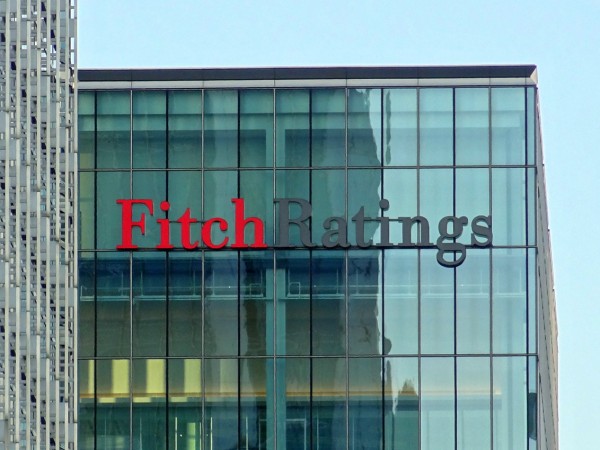 He raises the question of whether the balance of risks has changed: away from the risk of increased short-term borrowing causing a collapse of confidence to the risk of lack of growth causing a deterioration in public finances and this causing a fall in confidence. As we saw in the blog post Moody Blues, the lack of growth has already caused one ratings agency (Moody’s) to downgrade the UK’s credit rating. The other two major agencies, Standard & Poor’s and Fitch may well follow suit.
He raises the question of whether the balance of risks has changed: away from the risk of increased short-term borrowing causing a collapse of confidence to the risk of lack of growth causing a deterioration in public finances and this causing a fall in confidence. As we saw in the blog post Moody Blues, the lack of growth has already caused one ratings agency (Moody’s) to downgrade the UK’s credit rating. The other two major agencies, Standard & Poor’s and Fitch may well follow suit.
The day after Dr Cable’s article was published, David Cameron gave a speech saying that the government would stick to its plan of deficit reduction. Not surprisingly commentators interpreted this as a split in the Coalition. Carefully argued economics from Dr Cable it might have been, but political analysts have seen it as a hand grenade, as you will see from some of the articles below.
When the facts change, should I change my mind? New Statesman, Vince Cable (6/3/13)
Keynes would be on our side New Statesman, Vince Cable (12/1/11)
Exclusive: Vince Cable calls on Osborne to change direction New Statesman, George Eaton (67/3/13)
Vince Cable: Borrowing may not be as bad as slow growth BBC News (7/3/13)
Vince Cable makes direct challenge to Cameron over economic programme The Guardian, Nicholas Watt (7/3/13)
Vince Cable Says George Osborne Must Change Course And Borrow More To Revive Growth Huffington Post, Ned Simons (6/3/13)
David Cameron and Vince Cable at war over route to recovery Independent, Andrew Grice (6/3/13)
 Vince Cable: Borrowing may not be as bad as slow growth BBC News, James Landale (6/3/13)
Vince Cable: Borrowing may not be as bad as slow growth BBC News, James Landale (6/3/13)
David Cameron: We will hold firm on economy BBC News (7/3/13)
 David Cameron: We will hold firm on economy BBC News (7/3/13)
David Cameron: We will hold firm on economy BBC News (7/3/13)
 Clegg Backs Cable Over Controversial Economy Comments LBC Radio, Nick Clegg (7/3/13)
Clegg Backs Cable Over Controversial Economy Comments LBC Radio, Nick Clegg (7/3/13)
It’s plain what George Osborne needs to do – so just get on and do it The Telegraph, Jeremy Warner (6/3/13)
Vince Cable’s plan B: a “matter of judgement” BBC News, Stephanie Flanders (7/3/13)
George Osborne needs to turn on the spending taps The Guardian, Phillip Inman (12/3/13)
Questions
- Why has monetary policy proved ineffective in achieving a rapid recovery from recession?
- Distinguish between discretionary fiscal policy and automatic fiscal stabilisers.
- Why has the existence of automatic fiscal stabilisers meant that the public-sector deficit has been difficult to bring down?
- In what ways has the balance of risks in using discretionary fiscal policy changed over the past three years?
- In what ways is the depression of the late 2000s/early 2010s (a) similar to and (b) different from the Great Depression of the early 1930s?
- In what ways is the structure of public-sector debt in the UK different from that in many countries in the eurozone? Why does this give the government more scope for expansionary fiscal policy?
- Why does the Office of Budget Responsibility’s estimates of the tax and government expenditure multipliers suggest that “if fiscal policy is to work in a Keynesian manner, it needs to be targeted carefully, concentrating on capital projects”?
- Why did Keynes argue that monetary policy is ineffective at the zero bound (to use Dr Cable’s terminology)? Are we currently at the zero bound? If so what can be done?
- Has fiscal tightening more than offset loose monetary policy?
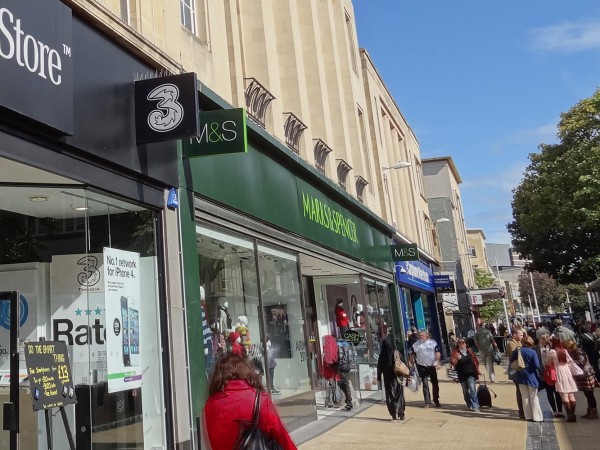 Adverts are increasingly diverse, ranging from families using various products and promoting their qualities, to a gorilla drumming, a horse dancing and a monkey drinking tea! But, how important is advertising to a product’s brand. Does it have a positive effect on sales and profitability?
Adverts are increasingly diverse, ranging from families using various products and promoting their qualities, to a gorilla drumming, a horse dancing and a monkey drinking tea! But, how important is advertising to a product’s brand. Does it have a positive effect on sales and profitability?
The key role of advertising is to sell more products and many firms spend a huge amount on advertising campaigns. Indeed, over £16bn was spent on advertising in 2012. Given that the economy is still vulnerable and many firms have seen their sales and profits decline, this is a huge amount. Procter & Gamble spent over £200 million, British Sky Broadcasting spent £145 million and Tesco spent £114 million in 2011.
 Advertising increases consumer awareness of the product and its features, but also actively aims to persuade people to purchase the product. By differentiating the product through adverts a company aims to shift the demand curve to the right and also make it more inelastic, by persuading customers that there are no (or few) close substitutes.
Advertising increases consumer awareness of the product and its features, but also actively aims to persuade people to purchase the product. By differentiating the product through adverts a company aims to shift the demand curve to the right and also make it more inelastic, by persuading customers that there are no (or few) close substitutes.
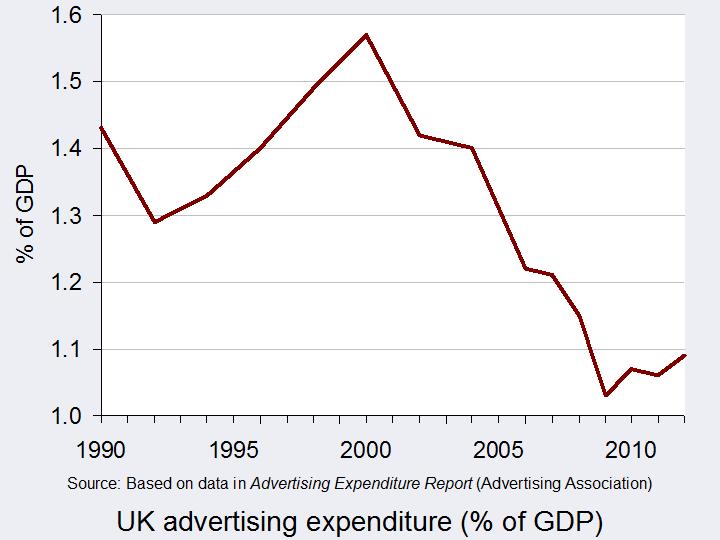 Since the start of the economic downturn in 2008, advertising expenditure has fallen, as companies have seen a decline in their budgets. From a high of £18.61 billion in 2004, the Advertising Association found that it fell to £14.20 billion in 2009 at constant 2008 prices. In the last few years, advertising expenditure has remained at around £14.5 billion. But, is cutting back on advertising a sensible strategy during a recession? Of course budgets are tight for both firms and consumers, but many suggest that media-savvy firms would actually benefit from maintaining their advertising. By doing so firms could take advantage of weaker competitors by increasing their market share and establishing their brand image in the long run.
Since the start of the economic downturn in 2008, advertising expenditure has fallen, as companies have seen a decline in their budgets. From a high of £18.61 billion in 2004, the Advertising Association found that it fell to £14.20 billion in 2009 at constant 2008 prices. In the last few years, advertising expenditure has remained at around £14.5 billion. But, is cutting back on advertising a sensible strategy during a recession? Of course budgets are tight for both firms and consumers, but many suggest that media-savvy firms would actually benefit from maintaining their advertising. By doing so firms could take advantage of weaker competitors by increasing their market share and establishing their brand image in the long run.
 It’s also important to consider another link between economic growth and advertising. Research suggests that advertising can be an important factor for economic growth. A three-year study undertaken by the Advertising Association and Deloitte, commencing in January 2013 suggests that for every £1 spent on advertising in the UK, £6 is generated for the wider economy. Based on these predictions, the estimated £16bn that was spent on ad campaigns in 2011 added over £100 billion to the UK’s GDP.
It’s also important to consider another link between economic growth and advertising. Research suggests that advertising can be an important factor for economic growth. A three-year study undertaken by the Advertising Association and Deloitte, commencing in January 2013 suggests that for every £1 spent on advertising in the UK, £6 is generated for the wider economy. Based on these predictions, the estimated £16bn that was spent on ad campaigns in 2011 added over £100 billion to the UK’s GDP.
 So, perhaps encouraging more advertising is the answer to the UK’s economic dilemma. This is certainly the opinion of Matt Barwell, the consumer marketing and innovation director of Diageo Western Europe, who said:
So, perhaps encouraging more advertising is the answer to the UK’s economic dilemma. This is certainly the opinion of Matt Barwell, the consumer marketing and innovation director of Diageo Western Europe, who said:
People fundamentally believe in advertising but a lot of the conversation focuses on negative elements. People rarely get the opportunity to talk about the positive role advertising plays in terms of wealth creation, exports and the social benefits that it provides. These are all things that many of us take for granted.
If private firms can therefore be encouraged to boost their marketing campaigns, jobs may be created, demand for products will rise and with the help of the multiplier, the economy may strengthen. Advertising has both pros and cons and opinions differ on what makes a good advert. But, whatever your opinion of the role of advertising, it is certainly an important aspect of any economy. The following articles take a view of advertising.
Articles
Could we advertise ourselves out of recession? Marketing Week, Lucy Tesseras (31/1/13)
Advertising in times of recession: A question of value The Open University, Tom Farrell (13/3/09)
Recession spending on advertising and R&D Penn State, Smeal College of Business
Nothing to shout about The Economist (30/7/09)
UK’s payday lenders face restrictions on advertising Reuters (6/3/13)
Value claims improve advertising effectiveness in recessionary times Com Score, Diane Wilson (17/9/13)
Advertising in a bad economy About Advertising, Apryl Duncan
Advertising worth £100bn to UK economy The Telegraph, Graham Ruddick (31/1/13)
Can advertising be the motor that gets the struggling UK economy out of first gear? More about advertising (26/2/13)
Adverts ‘worth £100bn to UK’ Independent, Giddeon Spanier (30/1/13)
Report
Advertising Pays – How advertising fuels the UK economy Advertising Association & Deloitte (30/1/13)
 Advertising Pays – How advertising fuels the UK economy: Accompanying video presentation Advertising Association & Deloitte: on YouTube (30/1/13)
Advertising Pays – How advertising fuels the UK economy: Accompanying video presentation Advertising Association & Deloitte: on YouTube (30/1/13)
Questions
- What is the role of advertising?
- Using a demand and supply diagram, illustrate and explain the role of advertising.
- During a recession, why would you expect advertising expenditure to fall? What impact would you expect this to have in your diagram from question 1?
- How might firms that sustain their advertising expenditure during a downturn benefit?
- Explain the link between advertising and the economy.
- Why could a higher level of advertising boost economic growth?
- Are there any negative externalities from advertising?
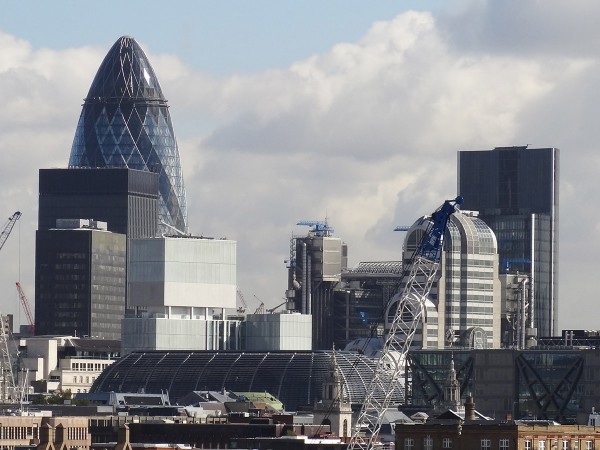 Moody’s, one of the three main international credit rating agencies, has just downgraded the UK’s credit rating from the top Aaa rating to Aa1. The other two agencies, Standard & Poor’s and Fitch may follow suit as they have the UK’s triple A rating on ‘negative outlook’.
Moody’s, one of the three main international credit rating agencies, has just downgraded the UK’s credit rating from the top Aaa rating to Aa1. The other two agencies, Standard & Poor’s and Fitch may follow suit as they have the UK’s triple A rating on ‘negative outlook’.
The reason for Moody’s decision can be see in its press statement:
The key interrelated drivers of today’s action are:
1. The continuing weakness in the UK’s medium-term growth outlook, with a period of sluggish growth which Moody’s now expects will extend into the second half of the decade;
2. The challenges that subdued medium-term growth prospects pose to the government’s fiscal consolidation programme, which will now extend well into the next parliament;
3. And, as a consequence of the UK’s high and rising debt burden, a deterioration in the shock-absorption capacity of the government’s balance sheet, which is unlikely to reverse before 2016.
The direct economic consequences of Moody’s action are likely to be minimal. People were excpecting a downgrade sooner or later for the reasons Moody’s quotes. Thus stock markets, bond markets and foreign exchange markets already reflect this. Indeed, in the first seven weeks of 2013, the sterling exchange rate index has depreciated by over 6%.
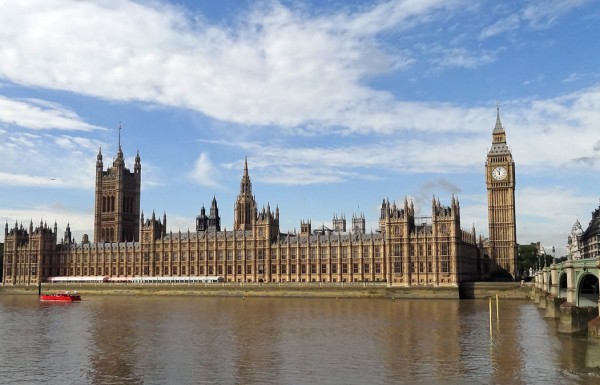 The political consequences, however, are likely to be significant. The Chancellor of the Exchequer, George Orborne, has put considerable emphasis on the importance of maintaining a triple A rating. He has seen it as a sign of the confidence of investors in the government’s policy of focusing on cutting the public-sector deficit and, ultimately, of cutting the public-sector debt as a proportion of GDP. His response, therefore, has been that the government will redouble its efforts to reduce the deficit.
The political consequences, however, are likely to be significant. The Chancellor of the Exchequer, George Orborne, has put considerable emphasis on the importance of maintaining a triple A rating. He has seen it as a sign of the confidence of investors in the government’s policy of focusing on cutting the public-sector deficit and, ultimately, of cutting the public-sector debt as a proportion of GDP. His response, therefore, has been that the government will redouble its efforts to reduce the deficit.
Not surprisingly the Labour opposition claims the downgrading is evidence that the government’s austerity policies are not working. If the aim is to cut the deficit/GDP ratio, this is difficult if GDP is falling or just ‘flat lining’. A less aggressive austerity policy, it is argued, would allow growth to recover and this rise in the denominator would allow the deficit/GDP ratio to fall.
Latest forecasts are that government borrowing is set to rise. The average of 24 independent forecasts of the UK economy, published by the Treasury on 13/2/13, is that public-sector net borrowing will rise from £90.7bn in 2012/13 to £107bn in 2013/14. And the European Commission forecast of the UK economy is that the general government deficit will rise from 5.9% of GDP in 2012/13 to 7.0% of GDP in 2013/14.
So what will be the economic and political consequences of the loss of the triple A rating? What policy options are open to the government? The following articles explore these questions. Not surprisingly, they don’t all agree!
Downgrading Britain: The Friday night drop The Economist, Buttonwood’s notebook (23/2/13)
Rating downgrade: Q&A The Observer, Josephine Moulds (24/2/13)
Downgrade is Osborne’s punishment for deficit-first policy The Guardian, Phillip Inman (23/2/13)
Britain’s downgraded credit rating: Moody’s wake-up call must trigger a change of course The Observer (24/2/13)
Editorial: AAA loss is a sign of failure Independent (24/2/13)
It’s not the end of the world – but it’s the end of any false complacency Independent, Hamish McRae (24/2/13)
Moody’s downgrade will stiffen George Osborne’s resolve The Telegraph, Kamal Ahmed (23/2/13)
UK AAA downgrade: Budget is now George Osborne’s make or break moment The Telegraph, Philip Aldrick (23/2/13)
Britain’s credit downgrade is a call to live within our means The Telegraph, Liam Halligan (23/2/13)
Britain will take years to earn back AAA rating, says Ken Clarke The Telegraph, Rowena Mason (24/2/13)
Questions
- How important are credit agencies’ sovereign credit ratings to a country (a) economically; (b) politically? Why may the political effects have subsequent economic effects?
- Explain the meaning of the terms ‘exogenous’ and ‘endogenous’ variables. In terms of the determination of economic growth, are government expenditure and tax revenue exogenous or endogenous variables? What are the implications for a policy of cutting the government deficit?
- Identify the reasons for the predicted rise in the public-sector deficit as a proportion of GDP. Which of these, if any, are ‘of the government’s own making’?
- In the absence of a change in its fiscal stance, what policies could the government adopt to increase business confidence?
 Each month the accountancy firm BDO publishes its Business Trends Indices. These indices “are ‘polls of polls’ that pull together the results of all the main UK business surveys”. The latest report shows that the January 2013 Optimism Index was its lowest since the report began 21 years ago.
Each month the accountancy firm BDO publishes its Business Trends Indices. These indices “are ‘polls of polls’ that pull together the results of all the main UK business surveys”. The latest report shows that the January 2013 Optimism Index was its lowest since the report began 21 years ago.
The Optimism Index predicts business performance two quarters ahead. In January 2013 it was 88.9. The way the index is constructed, a reading of 95 or more suggests that firms are optimistic about business performance. Clearly, they were pessimistic.
 Although there was an increase in hiring intentions, firms were still predicting a fall in output. The indices for optimism, employment and output are shown in the chart. (Click here for a PowerPoint.)
Although there was an increase in hiring intentions, firms were still predicting a fall in output. The indices for optimism, employment and output are shown in the chart. (Click here for a PowerPoint.)
As Peter Hemington, Partner, BDO LLP, commented:
In spite of a strengthening Labour Market, business confidence continues to weaken, and improved hiring intentions are not translating into growth plans. It seems the damaging effects on businesses of five years’ zigzagging economic growth, has left them wary of making concrete plans for expansion and resigned to the ‘new normal’ of economic stagnation.
To end this cycle, it is imperative that the Government implements plans to expedite growth. Without growth incentives, we will continue to see UK businesses reluctant to invest and expand, which poses a grave threat to the UK’s economic recovery.
The following articles comment on the gloomy mood of business and on its implications for output and investment. They also look at the implications for government policy.
Articles
Confidence slumps despite optimism from manufacturers Insider News (11/2/13)
Fears of a triple-dip recession return as survey puts business confidence at a 21-year low This is Money (11/2/13)
Pressure grows on ministers for growth strategy Yorkshire Post (11/2/13)
Triple-dip jitters as business confidence hits 21-yr low Management Today, Michael Northcott (11/2/13)
Report and data
Business Trends: Business confidence hits 21-year low signalling economic contraction BDO Press Release (11/2/13)
BDO Monthly Business Trends Indices, February 2013 – Full Report BDO (11/2/13)
Business and Consumer Surveys European Commission: Economic and Financial Affairs
Questions
- What reasons are given by the report for a decline in business optimism?
- Explain how an accelerator/multiplier interaction could compound the recession or help to cause a bounce back from recession.
- How does business sentiment in one country affect business sentiment in others?
- In the absence of a change in its fiscal stance, what policies could the government adopt to increase business confidence?
- Why might firms’ hiring intentions increase even though they are predicting a fall in output?
 The UK economy is suffering from a lack of aggregate demand. Low spending in real terms is preventing the economy from growing. A simple solution would seem to be to stimulate aggregate demand through fiscal policy, backed up by even looser monetary policy. But this is easier said than done and could result in undesirable consequences in the medium term.
The UK economy is suffering from a lack of aggregate demand. Low spending in real terms is preventing the economy from growing. A simple solution would seem to be to stimulate aggregate demand through fiscal policy, backed up by even looser monetary policy. But this is easier said than done and could result in undesirable consequences in the medium term. This second question has led many economists to argue that we need to see a rebalancing of the economy. What is needed is an increase in investment and exports, rather than an increase in just consumer expenditure funded by private borrowing and government current expenditure funded by public borrowing.
This second question has led many economists to argue that we need to see a rebalancing of the economy. What is needed is an increase in investment and exports, rather than an increase in just consumer expenditure funded by private borrowing and government current expenditure funded by public borrowing. As far as investment is concerned, there are two major problems. The first is the ability to invest. This depends on financing and things such as available land and planning regulations. The second is the confidence to invest. With not little or no growth in consumer demand, there is little opportunity for the accelerator to work. And with forecasts of sluggish growth and austerity measures continuing for some years, there is little confidence in a resurgence in consumer demand in the future. (Click here for a PowerPoint of the above chart. Note that the 2013 plots are based on AMECO forecasts.)
As far as investment is concerned, there are two major problems. The first is the ability to invest. This depends on financing and things such as available land and planning regulations. The second is the confidence to invest. With not little or no growth in consumer demand, there is little opportunity for the accelerator to work. And with forecasts of sluggish growth and austerity measures continuing for some years, there is little confidence in a resurgence in consumer demand in the future. (Click here for a PowerPoint of the above chart. Note that the 2013 plots are based on AMECO forecasts.)












